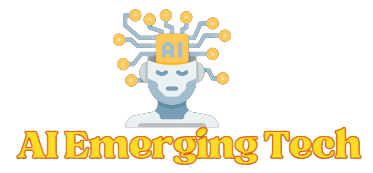Introduction
The Internet of Things (IoT) has become a game-changing technology that is altering numerous sectors and changing the way we interact with our environment. IoT is fundamentally a network of interconnected machines, systems, and other items that can talk to one another and share information online. The Internet of Things (IoT) has the potential to make the world more effective, convenient, and interconnected, from smart homes and cities to industrial automation and healthcare. This article examines the foundations of the Internet of Things, as well as its main characteristics, possible uses, and effects on our daily lives and society.
I. Understanding the Internet of Things
The Internet of Things is a large network of real-world objects that have sensors, actuators, and software built right into them so they can gather and share data. These gadgets can include everything from wearable technology and home appliances to business equipment and smart infrastructure. The ability to remotely monitor, manage, and make data-driven decisions is made possible by the IoT devices' ability to communicate and process data via the internet in real-time.
II. Key Features of IoT
1. Connectivity is the core component of the Internet of Things. IoT devices come with a range of connectivity options, including Wi-Fi, Bluetooth, Zigbee, cellular networks, and more, allowing for seamless data transfer.
2. Sensing and Data Collection: IoT devices come with sensors that can monitor and gather a wide range of data, including location, motion, temperature, humidity, and more.
3. Data analytics: By analyzing the data gathered by IoT devices, it is possible to obtain knowledge, spot trends, and make wise choices in a variety of applications.
4. Actuation and Control: Actuators enable Internet of Things (IoT) devices to conduct actions in response to data they receive. A smart thermostat, for instance, may change the temperature based on preferences and occupancy.
III. Applications of IoT
1. Smart houses: Using linked devices and smartphone apps, IoT enables homeowners to automate and control many parts of their houses, such as lighting, heating, security, and appliances.
2. Industrial IoT (IIoT): In the industrial sector, IoT is altering supply chain management, asset tracking, predictive maintenance, and production processes, resulting in higher productivity and efficiency.
3. Smart Cities: By monitoring energy consumption, boosting public services like trash management and public safety, and optimizing traffic flow, IoT plays a crucial role in developing smart and sustainable cities.
4. Healthcare: The Internet of Things (IoT) is transforming healthcare through telemedicine, wearable health technology, and remote patient monitoring, increasing patient outcomes and lowering healthcare costs.
5. Agriculture: Precision farming, which uses sensors and drones to monitor crops, improve irrigation, and increase overall farm productivity, is one of the IoT applications in agriculture.
6. Environmental Monitoring: IoT sensors are used to keep an eye on weather patterns, water quality, wildlife habitats, and air quality, which helps with disaster preparedness and management.
IV. Impact on Our Lives and Society
Our lives and society are already being significantly impacted by the Internet of Things:
1. Convenience and Efficiency: By automating repetitive processes and supplying real-time information, IoT has made our lives more convenient. Smart thermostats, for instance, may automatically alter the temperature based on occupancy and weather conditions, saving energy and improving comfort.
2. Data-Driven Decision Making: Businesses and governments can use IoT-generated data to make data-driven decisions that result in better resource allocation, enhanced services, and improved procedures.
3. Sustainability: IoT supports sustainable practices and the preservation of natural resources by maximizing resource usage and lowering waste.
4. Improved Safety and Security: By spotting threats and enabling real-time monitoring, IoT-based surveillance systems and smart security gadgets improve safety and security.
5. Better Healthcare: IoT-enabled wearable health devices and remote patient monitoring offer individualized healthcare, particularly for the management of chronic diseases and senior care.
V. Challenges and Considerations
The Internet of Things has many advantages, but it also has drawbacks:
1. Security and privacy: Due to the extensive network of linked devices, there is a risk of security flaws, which leaves IoT open to hacker assaults and data breaches.
2. Standardization: Because IoT includes a wide range of gadgets and technologies, standardization is crucial to ensuring compatibility and interoperability.
3. Data Overload: The sheer amount of data produced by IoT devices has the potential to overwhelm systems, demanding solutions for effective data processing, storage, and analysis.
4. Power Consumption: Because many IoT devices run on batteries, it's essential to optimize power consumption to guarantee their long-term performance.
VI. The Future of IoT
The potential for IoT is enormous in the future:
1. Edge Computing: By processing data closer to the source, edge computing will help to lower latency and bandwidth needs.
2. Integration of 5G: The introduction of 5G networks will improve IoT capabilities by enabling faster and more dependable communication for a huge variety of devices.
3. Artificial Intelligence (AI): When AI and IoT are combined, gadgets will be able to make wise decisions, gain knowledge from data, and adjust to user preferences.
4. Sustainability and Circular Economy: The Internet of Things (IoT) can be a major factor in accomplishing sustainability objectives including effective resource management and waste minimization.
Conclusion
The way we live, work, and interact with the world around us has changed as a result of the Internet of Things, which has ushered in a new era of connectedness and possibilities. IoT applications are transforming numerous industries and improving the quality of life for people and communities in everything from smart homes and cities to industrial automation and healthcare. Despite difficulties like security and data overload, IoT will continue to advance thanks to continual research, innovation, and cooperation. Responsible use of this technology will pave the way for a more intelligent, connected, and sustainable future for people. The Internet of Things will continue to broaden its influence, having a revolutionary effect on society as a whole and solidifying its place as a key driver of the subsequent wave of technological development.






Post a Comment